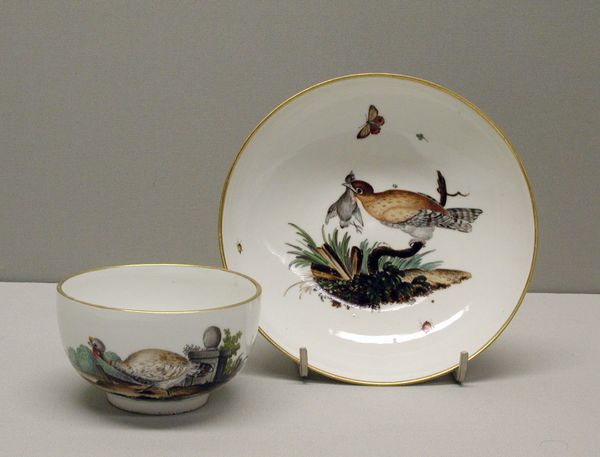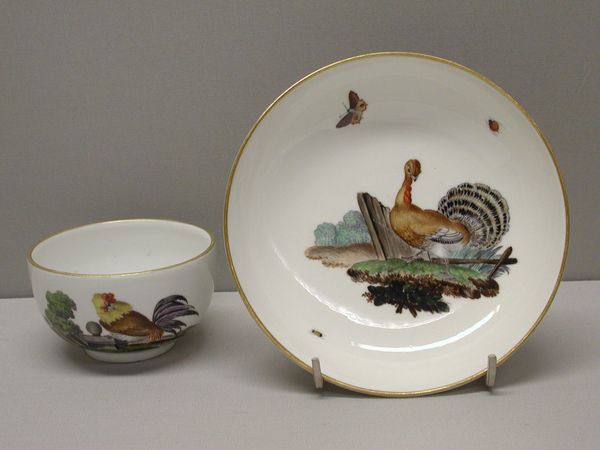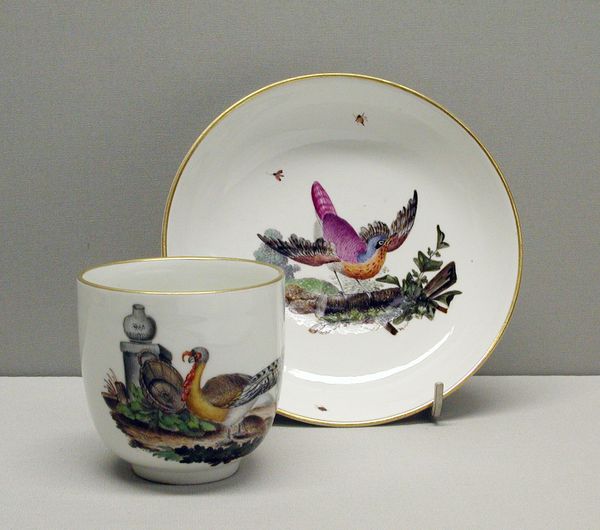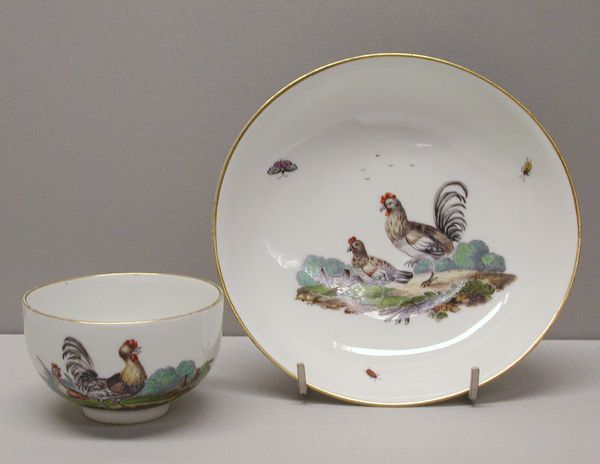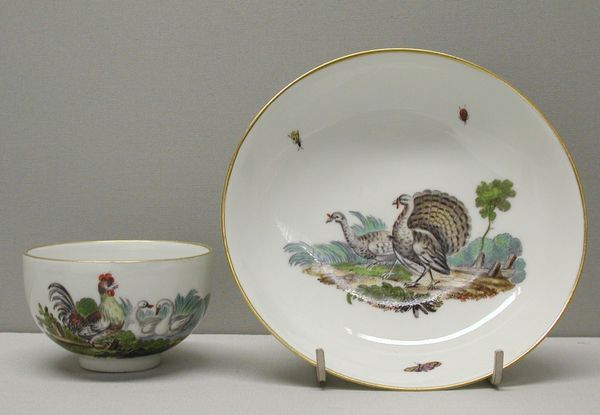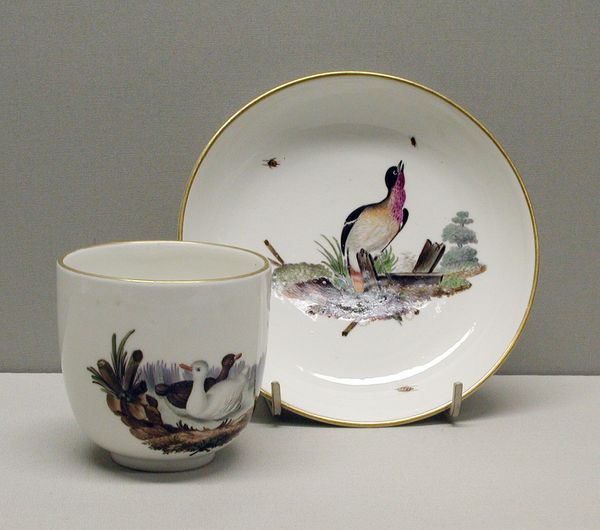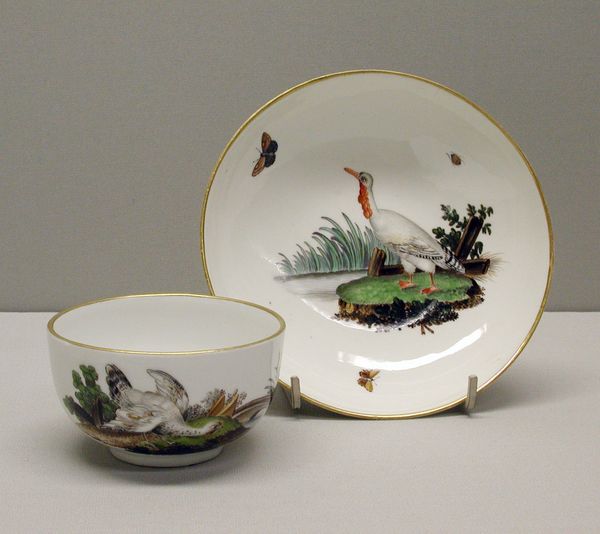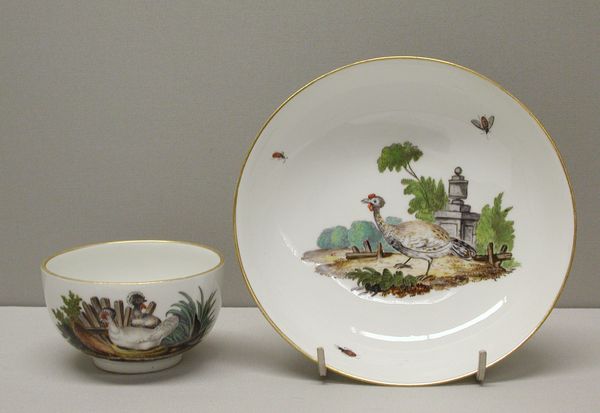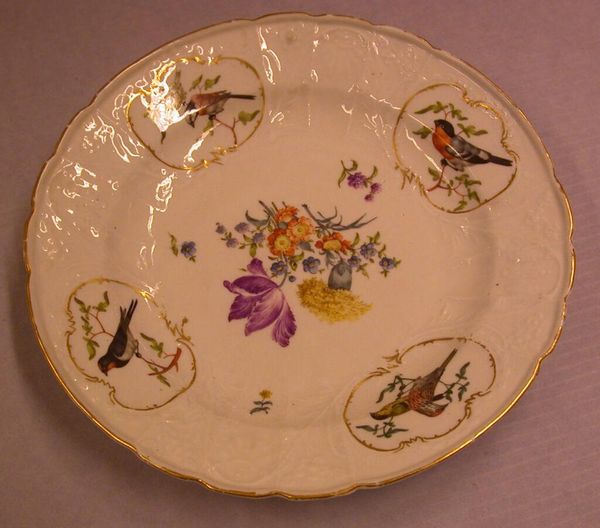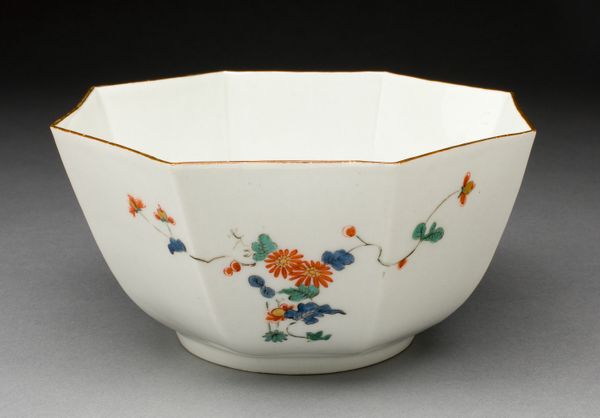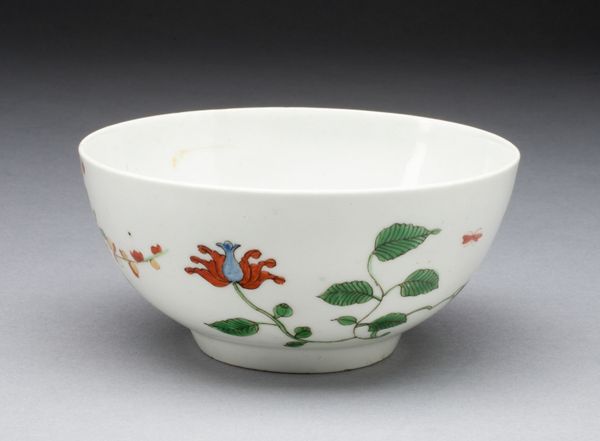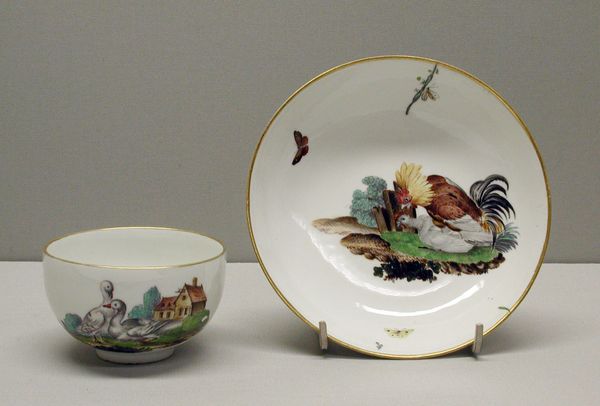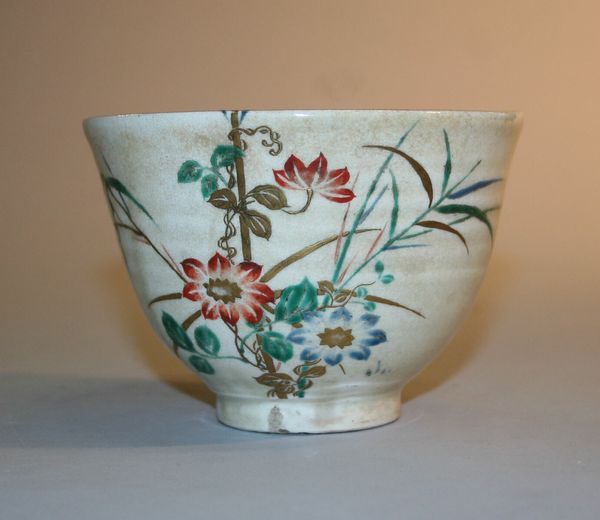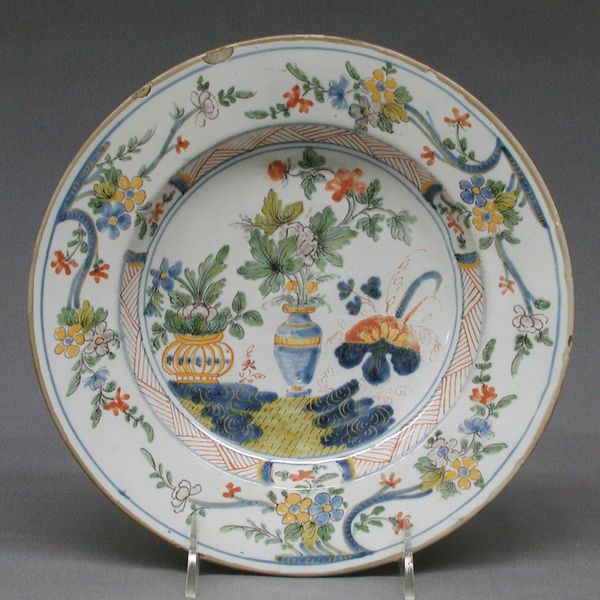
Dimensions: Overall (confirmed): 3 1/8 × 6 7/8 × 6 7/8 in. (7.9 × 17.5 × 17.5 cm)
Copyright: Public Domain
Curator: Here we have a delightful porcelain waste bowl crafted at the Höchst Manufactory sometime between 1770 and 1780. It resides at the Metropolitan Museum of Art, a little slice of rococo nestled in New York. Editor: Waste bowl, huh? Sounds incredibly practical and, looking at it… surprisingly elegant! I'm immediately drawn to the vibrant birds perched amidst those delicate, almost whimsical branches. There’s something carefree about it. Curator: Indeed! While functional, these bowls were also status symbols. The porcelain itself, the delicate painting—all indicators of wealth and refined taste during the late 18th century. Höchst, in particular, was known for its exceptional quality. They certainly weren't chucking coffee grounds into any old container. Editor: Refined taste is right! I'm noticing the intricate detailing in the plumage. Look at the speckled crest on that first bird; it’s like a tiny crown. I get a sense that each feathered friend is part of some ongoing theatrical narrative—maybe even an ornithological opera! Curator: Ha! Perhaps a comic one! Birds were frequently used as decorative motifs, referencing the natural world—very en vogue at the time. It’s fascinating to think about the cultural exchange too: Höchst was heavily influenced by French designs, but with a distinctly German interpretation, catering to local tastes and patronage. Editor: Do you think this piece has that slightly cynical playfulness you find in a lot of Rococo art? It’s as though the birds, perched so casually, are a little satirical jab at the upper classes, who owned pieces like these. Curator: That's a compelling interpretation! Given the changing political climate in the late 18th century, where the aristocracy was beginning to lose its grip, the artist could indeed be subtly commenting on societal vanities. These porcelain objects often circulated among a very select group, making such social commentaries especially pertinent. Editor: Ultimately, it is intriguing to ponder about our daily rituals and how those transform over the centuries. The waste that’s collected is such a powerful symbol too. Curator: Absolutely. This bowl is not just a receptacle, it's a looking glass into a world of social aspiration and artistic ingenuity.
Comments
No comments
Be the first to comment and join the conversation on the ultimate creative platform.
